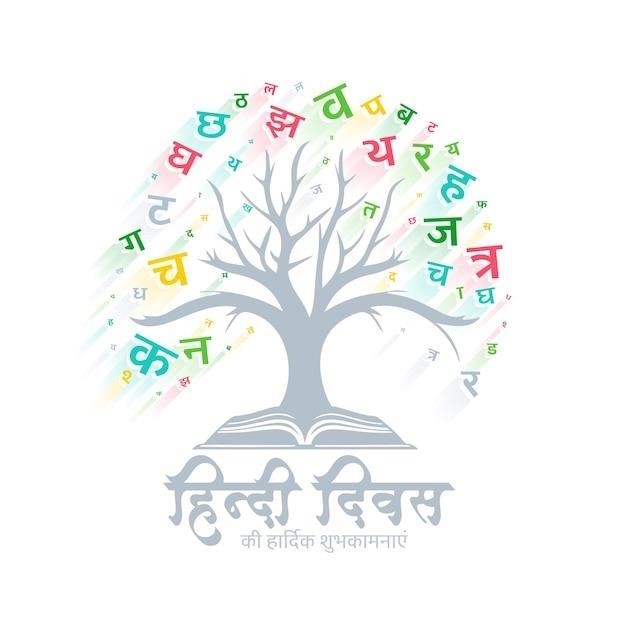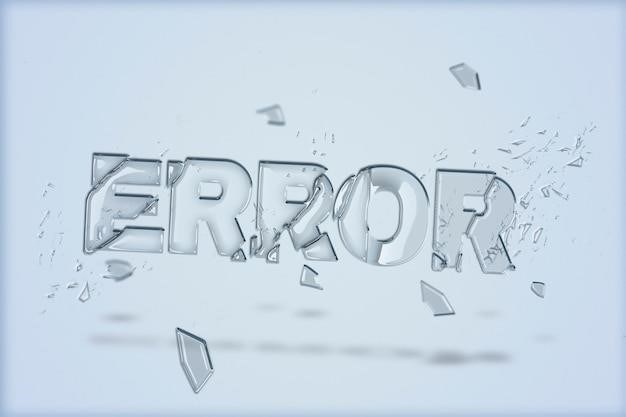Nitnem Path PDF in Punjabi⁚ A Comprehensive Guide
This guide provides a comprehensive overview of Nitnem Path, a collection of Sikh hymns read daily by practicing Sikhs. You will find information about the meaning of Nitnem, its importance, its components, and where to find Nitnem Path PDFs in Punjabi. This guide also covers the benefits of reading Nitnem and how to incorporate this practice into your daily routine for spiritual growth.
What is Nitnem?
Nitnem, derived from the Punjabi word “natnem” meaning “daily routine,” is a collection of sacred Sikh hymns (Gurbani) designed to be read by Sikhs on a daily basis. These hymns, primarily from the Guru Granth Sahib, the Sikh holy book, provide spiritual guidance and connect individuals with the Divine. Nitnem reading is considered a fundamental practice for Sikhs, particularly Amritdhari Sikhs (those who have taken the Sikh initiation ceremony), and serves as a foundation for their spiritual journey.
The Nitnem collection typically includes five core hymns known as the “Panj Bani” (five hymns)⁚ Japji Sahib, Jaap Sahib, Tav Prasad Savaiye, Benti Chaupai, and Anand Sahib; Some Sikhs also incorporate other hymns into their Nitnem, such as Rehras Sahib (evening prayer) and Kirtan Sohila (night prayer). The specific hymns included in Nitnem may vary based on individual practices and preferences.
Nitnem is not simply a set of prayers, but rather a profound spiritual practice that engages the mind, heart, and soul. Through the recitation of these hymns, Sikhs seek to connect with the Divine, cultivate inner peace, and live a righteous life in accordance with Sikh principles.
Nitnem Path in Punjabi⁚ Importance and Significance
Nitnem Path holds immense importance and significance within the Sikh faith, serving as a cornerstone of spiritual practice and personal growth. The daily recitation of these hymns is believed to bring numerous benefits, fostering a deep connection with the Divine and guiding individuals towards a life of righteousness and ethical conduct.
Nitnem is more than just a ritual; it is a transformative journey that engages the mind, heart, and soul. Through the contemplation of the sacred verses, Sikhs cultivate a sense of humility, gratitude, and devotion. The hymns inspire a sense of purpose and provide a framework for living a life guided by the principles of Sikhism, such as truthfulness, equality, and service to others.
Furthermore, Nitnem Path plays a vital role in preserving and transmitting Sikh heritage. The recitation of these ancient hymns ensures that the teachings of the Gurus remain alive and relevant for generations to come. The practice of Nitnem, therefore, becomes a bridge connecting the past, present, and future of the Sikh faith, fostering a sense of continuity and shared spiritual identity.
The Components of Nitnem
Nitnem is comprised of a collection of five core hymns, known as the Panj Bani, which are considered essential for daily recitation by practicing Sikhs. These hymns are⁚
- Japji Sahib⁚ The foundational hymn of Sikhism, composed by Guru Nanak Dev Ji, it explores the nature of God, the path to spiritual liberation, and the importance of living a righteous life.
- Jaap Sahib⁚ This hymn, attributed to Guru Gobind Singh Ji, focuses on the praise of God and the virtues of a true Sikh.
- Tav Prasad Savaiye⁚ A hymn composed by Guru Gobind Singh Ji, it emphasizes the importance of seeking God’s grace and the benefits of living a life dedicated to spiritual pursuit.
- Benti Chaupai⁚ This hymn, also composed by Guru Gobind Singh Ji, is a prayer seeking protection and guidance from God.
- Anand Sahib⁚ Composed by Guru Amar Das Ji, this hymn celebrates the joy of spiritual union with God and the bliss of living a life filled with divine love.
In addition to the Panj Bani, other hymns like Rehras Sahib and Kirtan Sohila are often included in the Nitnem practice by some Sikhs.
Japji Sahib
Japji Sahib, the foundational hymn of Sikhism, holds a central place in the Nitnem practice. Composed by Guru Nanak Dev Ji, the first Sikh Guru, it is a profound exploration of spiritual truths and a guide to living a life aligned with Sikh principles. Japji Sahib is often described as the essence of Sikh philosophy, encompassing core beliefs about God, creation, the nature of reality, and the path to liberation.
The hymn is divided into 38 stanzas, each exploring a different aspect of spirituality. It delves into themes like the oneness of God, the futility of worldly attachments, the importance of meditation and remembrance, and the transformative power of devotion. Japji Sahib is considered a profound meditation on the nature of existence and a roadmap for achieving spiritual enlightenment.
The recitation of Japji Sahib is believed to bring peace, clarity, and a deeper understanding of the divine. It serves as a daily reminder of the fundamental principles of Sikhism and inspires Sikhs to live a life of righteousness, compassion, and service to humanity.
Jaap Sahib
Jaap Sahib, another essential component of Nitnem, is a powerful hymn attributed to Guru Gobind Singh Ji, the tenth Sikh Guru. This hymn is a fervent prayer for protection and guidance, a call to remember God’s presence in all aspects of life. It is a powerful affirmation of faith and a reminder of the strength and resilience that comes from connecting with the Divine.
Jaap Sahib is structured as a dialogue between the devotee and the divine, expressing profound gratitude for God’s grace and seeking protection from the negative forces of the world. It emphasizes the importance of humility, service, and unwavering devotion to God. This hymn is particularly significant in the context of Nitnem as it strengthens the Sikh’s resolve to live a life guided by faith and righteousness.
Reciting Jaap Sahib is believed to infuse the individual with courage, clarity, and a sense of spiritual protection. It serves as a potent reminder of the importance of remaining steadfast in one’s faith, even amidst challenges. This hymn is a source of strength and reassurance for Sikhs, encouraging them to face life’s complexities with unwavering faith and a commitment to living in accordance with God’s will.
Tav Prasad Savaiye
Tav Prasad Savaiye, a beautiful hymn composed by Guru Nanak Dev Ji, the first Sikh Guru, is a heartfelt expression of gratitude for God’s grace and mercy. This hymn is a powerful reminder of the importance of humility and surrender to the Divine will. It emphasizes the interconnectedness of all beings and the inherent goodness that resides within the universe.
Tav Prasad Savaiye is a poignant reflection on the ephemeral nature of worldly possessions and the true value of spiritual wealth. It extols the virtues of selflessness, compassion, and unwavering faith in God. The hymn encourages the reader to seek refuge in the Divine presence and to strive for a life guided by righteousness and love.
This hymn is often recited as part of Nitnem, serving as a powerful reminder of the importance of living a life of service and devotion to God. It encourages Sikhs to cultivate a spirit of gratitude and humility, recognizing that all blessings emanate from the Divine. Tav Prasad Savaiye is a poignant reminder of the interconnectedness of all beings and the need to treat each other with kindness, compassion, and understanding.
Benti Chaupai
Benti Chaupai, a deeply moving hymn composed by Guru Ram Das Ji, the fourth Sikh Guru, is a fervent prayer for divine grace and protection. It is a heartfelt plea for liberation from the cycle of birth and death and for the attainment of spiritual enlightenment. This powerful hymn is a testament to the strength of faith and the unwavering devotion that can be found in the heart of a true seeker.
Benti Chaupai is a profound expression of humility and surrender to God’s will. It emphasizes the importance of seeking refuge in the Divine presence and of surrendering one’s ego to the higher power. The hymn is a powerful reminder that true happiness and fulfillment can only be found through a deep connection with the Divine.
Benti Chaupai is a central part of the Nitnem, serving as a daily reminder of the need for spiritual discipline and the importance of seeking guidance and protection from the Divine. It encourages Sikhs to cultivate a spirit of humility and to approach life with a sense of gratitude and reverence for the divine presence. This hymn is a powerful testament to the transformative power of faith and the ability of prayer to uplift the soul and guide us towards spiritual liberation.

Anand Sahib
Anand Sahib, meaning “Hymn of Bliss,” is a radiant composition by Guru Amar Das Ji, the third Sikh Guru. It is a celebration of the divine love and the joy that comes from experiencing union with the Divine. This hymn is a powerful testament to the transformative power of spiritual awakening and the profound peace that can be found through a deep connection with the Supreme Being.
Anand Sahib is a vibrant expression of the Sikh belief in the inherent goodness of creation and the interconnectedness of all beings. It emphasizes the importance of living a life filled with love, compassion, and service to others. The hymn encourages Sikhs to cultivate a spirit of joy and gratitude, recognizing that true happiness comes from within and is not dependent on external circumstances.
This hymn is often recited at Sikh weddings, as it celebrates the union of two souls and the profound joy of love. Anand Sahib is a powerful reminder that life is a journey of spiritual growth and that the ultimate goal is to experience the divine love that lies at the heart of all creation. It is a hymn that inspires hope, encourages resilience, and reminds us that true happiness lies in connecting with the divine light within and radiating that light outward to the world.
Benefits of Reading Nitnem
Reading Nitnem brings numerous benefits to both the individual and the community. It is a spiritual practice that cultivates inner peace, strengthens the connection with the divine, and promotes a sense of purpose and meaning in life. The daily recitation of these hymns helps to purify the mind, dispel negative thoughts, and cultivate a positive outlook. It fosters a sense of gratitude and appreciation for the blessings in one’s life, promoting contentment and resilience in the face of challenges.
Nitnem also instills a sense of ethical conduct, encouraging Sikhs to live a life of service, compassion, and truthfulness. The hymns inspire righteous action and promote social justice, reminding individuals of their responsibility to contribute to the well-being of the community. By engaging with the profound wisdom and teachings contained within Nitnem, individuals gain a deeper understanding of their own spirituality and develop a stronger sense of self-awareness.
Moreover, the practice of reading Nitnem strengthens the bonds of community and fosters a sense of shared purpose among Sikhs. It creates a space for collective reflection, spiritual growth, and the affirmation of shared values. The daily recitation of these hymns serves as a reminder of the interconnectedness of all beings and encourages individuals to live in harmony with each other and with the natural world.
Where to Find Nitnem Path PDF in Punjabi
Finding Nitnem Path PDFs in Punjabi is easier than ever thanks to the digital age; Numerous online resources offer free downloads of Nitnem Path in Gurmukhi script, with some even providing English translations for those unfamiliar with the language. Websites like SikhNet, a leading online platform for Sikh resources, offer a comprehensive selection of Gurbani texts, including Nitnem Path in various formats. You can also find Nitnem Path PDFs on dedicated Gurbani websites, often featuring audio recordings and annotations to enhance understanding.
Several mobile applications are available for download that provide access to Nitnem Path in Punjabi. These apps offer interactive features such as audio playback, text highlighting, and even the ability to adjust font size and layout for a personalized reading experience. Platforms like Scribd, a global social reading and publishing site, also host a variety of Nitnem Path PDFs in Punjabi, allowing users to access them directly through their platform. Additionally, searching for “Nitnem Path PDF in Punjabi” on popular search engines like Google will yield a wide range of results, including links to websites and online libraries dedicated to Sikh scripture.
Remember to always verify the source of any PDF you download, ensuring it originates from a reputable and trustworthy site. This will guarantee the accuracy and authenticity of the text, providing a valuable resource for your spiritual practice.

How to Read Nitnem
Reading Nitnem is a deeply personal and spiritual practice, and there is no single right way to do it. However, there are some general guidelines that can help you approach this sacred text with reverence and understanding. First, find a quiet and peaceful place where you can focus without distractions. It is also helpful to create a sacred space, perhaps by lighting a candle or incense, to enhance your focus and create a sense of reverence. Begin by reciting the Japji Sahib, the foundational hymn of Nitnem, followed by the other components in their traditional order.
If you are unfamiliar with Gurmukhi script, use a translation or transliteration to guide you. Many resources are available online and in print, offering English translations alongside the Gurmukhi text. As you read, try to focus on the meaning of the words, reflecting on the wisdom and teachings contained within the hymns. You can also listen to audio recordings of Nitnem, which can help you connect with the rhythm and melody of the verses. It is also beneficial to meditate on the meaning of the hymns after you have finished reading them. Take some time to reflect on the lessons and insights you have gained, and allow the words to resonate within your heart and mind.
Remember, reading Nitnem is not just about reciting words; it is about engaging with the divine and cultivating a deeper connection with your inner self. Approach the text with humility, devotion, and an open heart, and you will find that Nitnem becomes a source of spiritual growth and enlightenment.



























